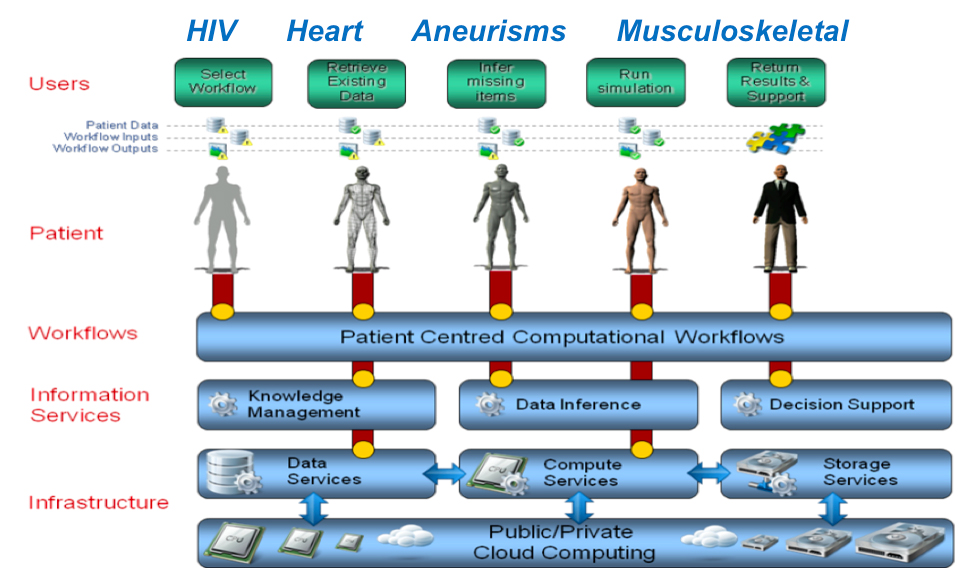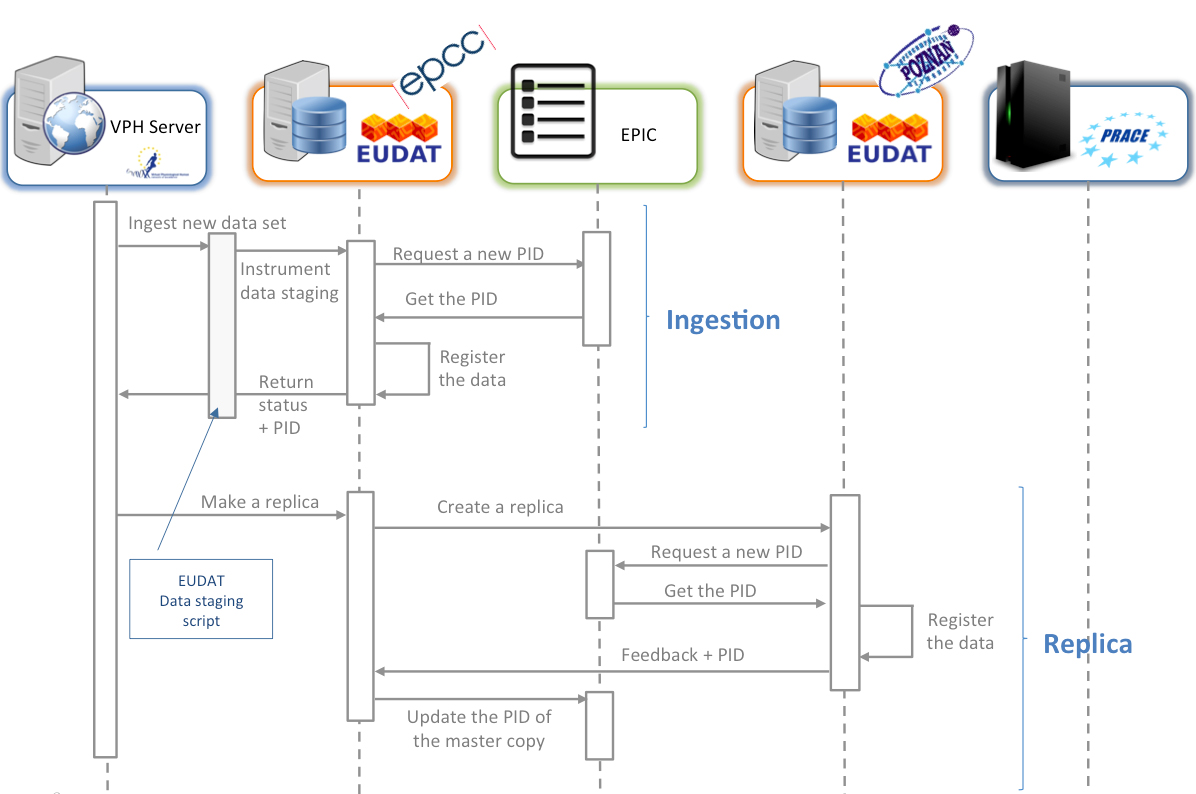
Stefan Zasada is a Senior Research Associate at University College London (UCL) and is involved in the Virtual Physiological Human framework (VPH). Stefan is a software engineer in the Centre for Computational Science at UCL, where he works on developing lightweight grid middleware and enabling tools for high performance computing (HPC) and e-Science. He is currently working on a tool called ufBAC that is designed to speed up the process of calculating accurate drug-binding affinities, which thus has important applications in drug design/discovery and personalised medicine.
Hello Stefan, before we get into details about your work with EUDAT, perhaps you would explain what the VPH project is all about?
VPH (http://vph-portal.eu) was funded by the European Union (EU) with the goal of making collaborative investigation of the human body possible across all the relevant scales (from the level of molecules through cells and organs to the whole body). We are introducing multiscale methodologies (that is, working on different scales within the body) into medical and clinical research – for example, in predictive disease modelling or to optimize cancer treatment for an individual.
The VPH community is developing a framework, through projects such as the personalized medicine “p-medicine” project and VPH-Share, that will provide the organisational fabric for this. It will be realised as a series of services offered within an integrated framework that will enable researchers and clinicians to share and manage data, information and tools. This will facilitate collaboration between the members of the VPH community and also enable researchers to create and run new VPH workflows.

Ok, Stefan, so which EUDAT services is VPH using or going to be using in developing the framework?
We are currently using EUDAT services to store data safely and to move it from where it is stored to the supercomputer resources where complex calculations are performed. More specifically, we are using B2SAFE to ingest VPH data sets (that is, to read the data and save it) into EUDAT resources for preservation purposes, and also to replicate (that is, make copies) of our data across multiple EUDAT nodes in order to make it easier to access the data and also make it safer (in case one copy of a particular set of data is lost or damaged). B2STAGE is being used for staging (that is, moving) data from EUDAT storage resources to PRACE work areas (namely high performance computing systems) and vice versa, and also to help run scientific applications on those PRACE resources with our VPH data.

We plan to continue these data storing activities with the “p-medicine” project using B2STAGE, and also intend to promote EUDAT to new VPH users through the VPH Institute. Something new that we will be looking at is using B2FIND to make it possible to search the VPH data. In addition, we are aiming to integrate EUDAT’s services with future VPH-related projects, such as the CompBioMed proposal (which was submitted to a recent H2020 Centres of Excellence for Computing Applications call) and in a VPH-related proposal submitted to the combined PRACE/EUDAT call.
Why did VPH chose to be involved with EUDAT - why were EUDAT’s services of interest to VPH? What are the advantages of the EUDAT services for VPH (as opposed to the other alternatives)?
In addition to needing computation platforms on which to run multiscale human-derived models, VPH has a pressing need to store the data that is generated from such simulations, and share it within the research community. EUDAT provides an ideal platform to do this, and we have worked to link the EUDAT services with VPH-developed portal tools to integrate our compute/simulation and data storage workflows. Principally we have used (and assisted with the specification of) the B2STAGE service for moving data between EUDAT and compute resources. EUDAT offers a better long-term managed solution for data archiving, thereby allowing computational biomedical scientists to focus on their research instead of worrying about buying and managing their own data storage infrastructure.
In practical daily terms, how is the collaboration with EUDAT and the use of the EUDAT services helping the VPH community and researchers? Has the collaboration solved problems that would have been harder for VPH to solve on its own?
Data is created by researchers working on specific problems and, by its nature, this comes in “bursts” so data is ingested at EUDAT sites periodically, as it becomes available, using VPH portal tools and B2STAGE. One thing to note is that VPH was a funded initiative under the European Union’s Seventh Framework Programme (FP7), which was the research and innovation funding programme for 2007-2013, but VPH is not continuing as a distinct funded entity in the current Horizon 2020 programme (H2020). However, the VPH community is still being coordinated through the VPH Institute, a not-for-profit organisation, and individual VPH-type projects are being funded through different H2020 calls. Because of this, the current phase of the EUDAT project provides a welcome glue to help the VPH community maintain cohesion through a centralised data storage service.
